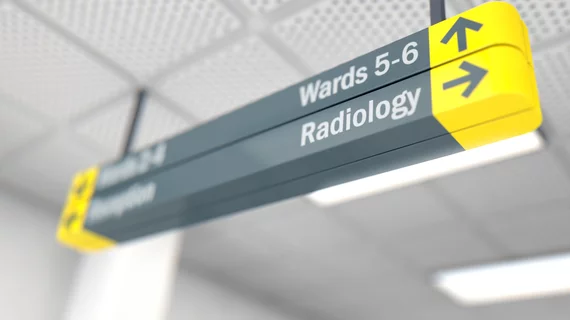Why it might be time to combine emergency radiology with emergency medicine
Nearly every patient passing through an emergency department receives some form of medical imaging. This growing practice has thrust radiology front and center in emergent patient care and is only expected to continue.
One Yale imaging expert recently had an idea based on this deepening relationship: What if emergency medicine and emergency radiology combined into one specialty?
The question is largely an exercise in thought, Jonathan L. Mezrich, MD, JD, MBA, with Yale University School of Medicine’s Department of Diagnostic Radiology and Biomedical Imaging, explained in JACR. But the move could create a more efficient, collaborative, and care-focused culture for providers and patients alike.
“Emergency radiology today serves as an important step in emergency patient throughput,” Mezrich added. “But because emergency radiology and emergency medicine are separate specialties, not fully integrated and sometimes with discrete technological firewalls, inefficiencies abound.”
Communication issues are chief among them, he argued, with imaging orders sometimes overly broad, requiring long back-and-forth discussions between rads and ED physicians. Referrers are also often unclear about which imaging study to order, if contrast is needed, and whether premedication is required, among other issues.
These communication breakdowns come with inherent malpractice risk exemplified by the growing number of lawsuits stemming from failed radiology communication. Closing this loop and vertically integrating emergency radiology into the ED takes care of these problems, sending longstanding issues “by the wayside,” Mezrich noted.
Of course, there are a number of difficult considerations and changes that would need to be addressed. Emergency medicine residency, along with other training pathways, would need to be revamped to focus on imaging, namely radiography, CT and ultrasound.
Physical infrastructure would also need to be redesigned, with imaging facilities placed directly in the ED or “trauma bays” for immediate communication between emergency providers, “physician imagers” and staff.
Perhaps the largest roadblock to vertical integration are the financial considerations, Mezrich noted. Self-referrals would be more difficult, but not impossible. Legislative changes would likely be required for this new reconfiguration of emergency imaging. And reimbursement for imaging would become another thorny issue. Radiology would likely receive technical, but not professional fees, Mezrich explained.
Given that this opinion piece is part of a special edition of the Journal of the American College of Radiology focused on provocative issues, there are some who disagreed with Mezrich’s thoughts.
Howard B. Fleishon, MD, MMM, and Jamlik-Omari Johnson, MD, both with Emory University in Atlanta, said Mezrich’s goals are “laudable” but suggested both facets of emergency care—radiology and medicine—are not distinctly separate by accident.
“There is a reason radiology is five or more years of training to be eligible for certification: the complexity of physics, anatomy, pathology, quality and safety, incidental findings, appropriate disposition, and follow-up—radiology is a discipline unto itself with emergency radiology a real and proper subspecialization,” the pair wrote Jan. 1 in JACR.
The two imaging professionals each noted that the premise of combining both specialties should be “rejected by the house of medicine as a whole.” Instead, they said, efforts should be focused on patients.
“Our goal should be to optimize patient care. Eliminating experience and expertise at a time when medical knowledge is exponentially increasing in complexity puts us all at risk. Many issues are discounted by the proposed model including certification, scope of practice, compensation, and alternative delivery models,” they concluded.

